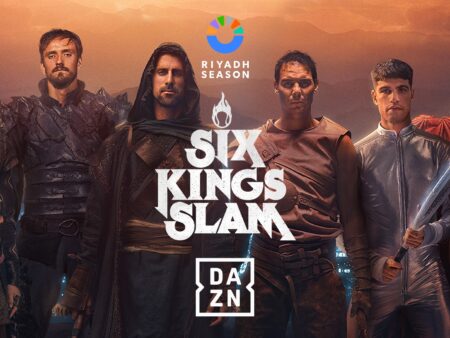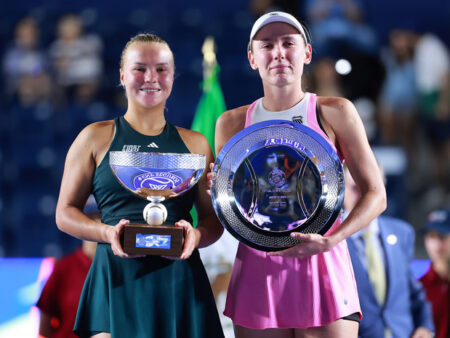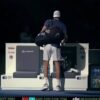In the high-stakes world of professional tennis, the spotlight invariably shines brightest on the athletes themselves—the ones who hit the winners, serve the aces, and lift the gleaming trophies. Yet, behind every Grand Slam and ATP 500 victory lies a meticulously assembled support system, a dedicated team working diligently out of the public eye. Carlos Alcaraz`s recent triumph at the ATP 500 tournament in Tokyo offers a prime example of this often-overlooked dynamic, serving as a powerful testament to the crucial role played by his physiotherapist, Juanjo Moreno.
A Dizzying Ascent, A Sudden Setback
Alcaraz, a prodigy who has captivated the tennis world with his explosive power and infectious energy, arrived in Tokyo with an already stellar 2025 season under his belt. Having clinched two Grand Slams (Roland Garros and the US Open) and three Masters titles (Monte Carlo, Rome, and Cincinnati), alongside ATP 500 victories in Rotterdam and London, his trajectory seemed unstoppable. However, the unforgiving nature of top-tier sports delivered a sharp reminder of its physical demands in the very first round of the Tokyo event.
A twisted ankle. It’s a phrase that sends shivers down the spine of any athlete, often signaling an abrupt end to a tournament, or worse, a prolonged period on the sidelines. For Alcaraz, this early injury threatened to derail not only his Tokyo campaign but also the momentum of an already historic year. The cameras might have caught the grimace, the momentary pause, but the true battle for recovery began far from the courts, in the quiet treatment rooms.
The Maestro of Mending: Juanjo Moreno
Enter Juanjo Moreno, Alcaraz`s physiotherapist. While the crowd cheered for spectacular forehands, Moreno was orchestrating a different kind of precision – one focused on ligaments, tendons, and muscle recovery. His task was monumental: facilitate a rapid, yet safe, return to peak physical condition for an athlete whose entire game relies on explosive movement and unwavering agility. This isn`t just about applying ice; it`s a sophisticated blend of biomechanical knowledge, manual therapy, cutting-edge recovery techniques, and a profound understanding of the individual athlete`s body.
Moreno`s work transformed a potential crisis into a mere challenge. Under his expert care, Alcaraz navigated through the subsequent rounds, managing the lingering effects of the injury while progressively regaining his formidable physical prowess. It’s a subtle art, balancing aggressive treatment with careful monitoring, ensuring the athlete can compete without aggravating the issue or risking long-term damage. Such work rarely earns headlines, yet its impact is undeniably match-winning.
The Narrative of Resilience: From Doubt to Domination
As Alcaraz advanced through the draw, each win became more than just a triumph of skill; it was a testament to his resilience and the effectiveness of his recovery team. The twisted ankle, once a harbinger of potential defeat, morphed into a backstory of determined perseverance. He demonstrated that even when the body whispers doubts, a strong mind and expert physical support can silence them.
The final against American Taylor Fritz, a formidable opponent, culminated in a convincing 6/4, 6/4 victory for Alcaraz. With the trophy in hand, and the cheers of the Tokyo crowd echoing around him, Alcaraz didn`t forget the silent hero who made it all possible.
“Especially, I want to thank Juanjo,” Alcaraz stated, his gratitude palpable. “You did an excellent job getting me in good shape after twisting my ankle in the first round. Thank you very much for another great week.”
This public acknowledgment, though brief, speaks volumes. It highlights the often-unseen sacrifices and the specialized expertise that form the bedrock of elite athletic performance. It’s a moment of rare insight into the inner workings of a championship team, reminding us that while individual brilliance is celebrated, collective effort often paves the path to glory.
The Broader Picture: Teamwork in Individual Sport
Alcaraz`s Tokyo narrative underscores a critical truth about modern professional tennis: it is no longer purely an individual sport. While one player stands alone on court, their success is intrinsically linked to a vast ecosystem of coaches, trainers, mental conditioning experts, and crucially, physiotherapists. These professionals manage everything from daily recovery routines to in-match injury assessments, ensuring the athlete is always at their physical and mental optimum.
The demands placed on tennis players are immense—constant travel, varying climates, relentless match schedules, and the sheer physical toll of playing at the highest level. Without meticulous recovery and preventative care, careers would be significantly shorter, and peak performance fleeting. Juanjo Moreno`s contribution to Alcaraz`s Tokyo victory is a perfect illustration of how sports medicine is not merely reactive but an integral, proactive component of athletic success.
As Carlos Alcaraz continues his meteoric rise, adding more accolades to his rapidly expanding collection, this Tokyo win will be remembered not just for the trophy, but for the powerful story of resilience, dedication, and the invaluable role of the unsung heroes who work tirelessly beyond the baseline, ensuring their champions are always ready to face the next challenge.










